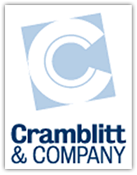Peer pressure and leaving no fingerprints
November 1st, 2010 | Comments Off on Peer pressure and leaving no fingerprints
You might have thought that the pressure to say the right thing, wear the right thing, do the right thing, left you in high school, but you’re likely wrong.
Studies cited in yesterday’s New York Times magazine (“Nudge the Vote” by Sasha Issenberg) show that peer pressure is the biggest single generator of higher voter turnout. The article also punctures the myths of celebrity endorsements, four-color glossy mailings and robo calls (or almost any call for that matter).
Leave fingerprints behind
The findings are interesting for all marketers. How can we use subtle (or maybe not so subtle) peer pressure to help sell products? Beauty and exercise products have used this forever, of course, but couldn’t it be applied to technology or informational products?
A finding that I found aligns closely with the sensibilities of engineers and other buyers of technology is that voters don’t want marketing dazzle, according to political consultant Hal Malchow. His primary findings:
- E-mail and text messages from unexciting senders (such as “Election Center”) often do better than those with livelier “from” lines.
- Voters pay less attention to glossy four-color brochures than they do to spare envelopes containing simple letters like ones received from government officials.
“People want information, they don’t want advertising,” Malchow says. “When they see our fingerprints on this stuff, they believe it less.”
Voters are a lot like your audience
Other interesting snippets from the article:
- People are more likely to perform an action if they have already visualized doing it.
- In-person canvassing outperformed all other voter promotions by a wide margin.
- The most effective way to find what works is testing different messages with small samples and then sending the most influential ones to a much larger target audience.
If you think of the audience for your products — especially if you are in high-technology — chances are they are a close fit with voters: skeptical, disillusioned with marketing, and not convinced by displays of force or flash.

